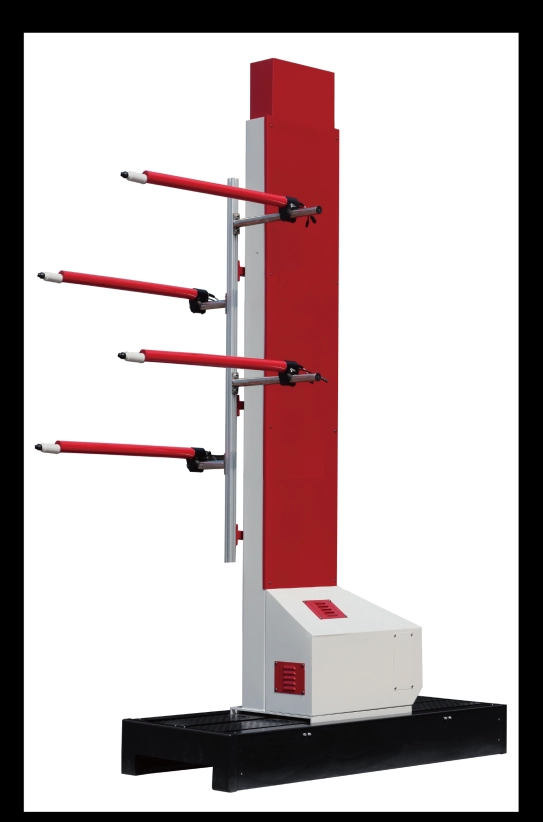Content Menu
● Understanding Electrostatic Spray Guns
>> What is an Electrostatic Spray Gun?
>> How Does It Work?
● Common Issues in Manual Electrostatic Spray Gun Operation
>> Inconsistent Spray Pattern
>>> Causes
>>> Solutions
>> Poor Adhesion of Coating
>>> Causes
>>> Solutions
>> Orange Peel Effect
>>> Causes
>>> Solutions
>> Paint Drips and Runs
>>> Causes
>>> Solutions
>> Static Electricity Issues
>>> Causes
>>> Solutions
● Maintenance Tips for Electrostatic Spray Guns
>> Regular Cleaning
>> Inspect Components
>> Calibration
>> Training and Best Practices
● Conclusion
>> Frequently Asked Questions
Electrostatic spray guns are widely used in various industries for their efficiency and effectiveness in applying coatings. However, like any equipment, they can encounter issues that may affect their performance. This article aims to provide a comprehensive guide to troubleshooting common problems associated with manual electrostatic spray gun operation. We will explore the causes of these issues, how to identify them, and the steps to resolve them.

Understanding Electrostatic Spray Guns
What is an Electrostatic Spray Gun?
An electrostatic spray gun is a device that uses electrostatic charge to attract paint particles to a surface. This technology allows for a more uniform coating and reduces overspray, making it an environmentally friendly option. The gun charges the paint particles as they exit the nozzle, which are then attracted to the grounded surface being painted.
How Does It Work?
The operation of an electrostatic spray gun involves several key components: the spray gun itself, a power supply, and the paint. The power supply generates a high voltage that charges the paint particles. When the gun is triggered, the paint is atomized and sprayed onto the surface, where the charged particles adhere due to the electrostatic attraction.
Common Issues in Manual Electrostatic Spray Gun Operation
Despite their advantages, users may encounter several common issues when operating manual electrostatic spray guns. Below, we will discuss these issues in detail.
Inconsistent Spray Pattern
One of the most common problems is an inconsistent spray pattern, which can lead to uneven coating.
Causes
- Clogged Nozzle: Paint buildup can obstruct the nozzle, affecting the spray pattern.
- Incorrect Air Pressure: Insufficient or excessive air pressure can disrupt the atomization process.
- Improper Gun Angle: Holding the gun at the wrong angle can lead to uneven application.
Solutions
1. Clean the Nozzle: Regularly clean the nozzle to prevent clogs. Use a suitable solvent to dissolve any paint residue.
2. Adjust Air Pressure: Check the air pressure settings and adjust them according to the manufacturer's recommendations.
3. Maintain Proper Angle: Ensure the gun is held at the correct angle (usually perpendicular to the surface) for optimal coverage.
Poor Adhesion of Coating
Another frequent issue is poor adhesion of the coating, which can result in peeling or flaking.
Causes
- Surface Contamination: Dirt, grease, or moisture on the surface can prevent proper adhesion.
- Incorrect Coating Thickness: Applying too thick or too thin a layer can affect adhesion.
- Incompatible Coatings: Using coatings that are not compatible with the substrate can lead to adhesion problems.
Solutions
1. Prepare the Surface: Thoroughly clean the surface before application. Use appropriate cleaning agents to remove contaminants.
2. Control Coating Thickness: Follow the manufacturer's guidelines for the recommended thickness of the coating.
3. Test Compatibility: Always test the coating on a small area to ensure compatibility with the substrate.
Orange Peel Effect
The orange peel effect refers to a textured finish that resembles the skin of an orange, which is undesirable in most applications.
Causes
- Improper Atomization: Insufficient atomization can lead to larger paint droplets, resulting in a rough finish.
- Incorrect Voltage Settings: Too high or too low voltage can affect the spray pattern and finish quality.
- Environmental Conditions: High humidity or low temperatures can impact the drying process and finish.
Solutions
1. Optimize Atomization: Adjust the air pressure and fluid flow settings to achieve proper atomization.
2. Set Correct Voltage: Ensure the voltage is set according to the paint type and environmental conditions.
3. Control Environment: Try to maintain optimal temperature and humidity levels in the spraying area.
Paint Drips and Runs
Drips and runs occur when excess paint accumulates on the surface, leading to an uneven finish.
Causes
- Overapplication: Applying too much paint in one pass can cause drips.
- Incorrect Gun Technique: Moving the gun too slowly or pausing can lead to excess paint buildup.
- Improper Viscosity: Paint that is too thick may not atomize properly, leading to drips.
Solutions
1. Adjust Application Technique: Maintain a consistent speed and distance from the surface while spraying.
2. Control Fluid Flow: Reduce the fluid flow setting to prevent overapplication.
3. Check Paint Viscosity: Ensure the paint is mixed to the correct viscosity as per the manufacturer's specifications.
Static Electricity Issues
Static electricity can cause problems during the spraying process, including attracting dust and debris to the wet paint.
Causes
- Insufficient Grounding: If the equipment is not properly grounded, static charges can build up.
- Environmental Factors: Low humidity levels can increase static electricity in the spraying area.
Solutions
1. Ensure Proper Grounding: Check that the spray gun and the workpiece are properly grounded to dissipate static charges.
2. Control Humidity: Use humidifiers in the spraying area to maintain optimal humidity levels and reduce static buildup.
Maintenance Tips for Electrostatic Spray Guns
Regular maintenance is crucial for ensuring the longevity and performance of electrostatic spray guns. Here are some essential maintenance tips:
Regular Cleaning
After each use, clean the spray gun thoroughly to prevent paint buildup. Disassemble the gun as per the manufacturer's instructions and use appropriate solvents for cleaning.
Inspect Components
Regularly inspect the gun's components, including the nozzle, air cap, and fluid passages, for wear and damage. Replace any worn parts to maintain optimal performance.
Calibration
Periodically calibrate the spray gun to ensure that it operates within the manufacturer's specified parameters. This includes checking air pressure, fluid flow, and voltage settings.
Training and Best Practices
Ensure that all operators are trained in the proper use of electrostatic spray guns. This includes understanding the equipment, safety protocols, and best practices for application.
Conclusion
Troubleshooting common issues in manual electrostatic spray gun operation is essential for achieving high-quality finishes and maintaining efficiency in coating applications. By understanding the causes of these problems and implementing the appropriate solutions, users can enhance their spraying experience and ensure optimal performance of their equipment.

Frequently Asked Questions
1. What should I do if my spray gun is not spraying at all?
- Check for clogs in the nozzle, ensure the paint is properly mixed, and verify that the air pressure is set correctly.
2. How can I prevent paint from running?
- Maintain a consistent speed while spraying, adjust the fluid flow, and ensure the paint is not too thick.
3. What causes the orange peel effect, and how can I fix it?
- The orange peel effect is caused by improper atomization or incorrect voltage settings. Adjusting these parameters can help achieve a smoother finish.
4. Why is my paint not adhering properly?
- Poor adhesion can result from surface contamination or incompatible coatings. Ensure the surface is clean and test compatibility before application.
5. How often should I clean my electrostatic spray gun?
- Clean the spray gun after each use to prevent paint buildup and maintain optimal performance.
Hot Tags: China, Global, OEM, private label, manufacturers, factory, suppliers, manufacturing company










































 .
. 